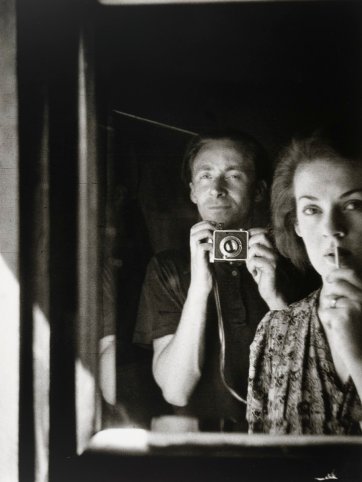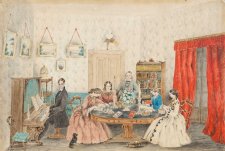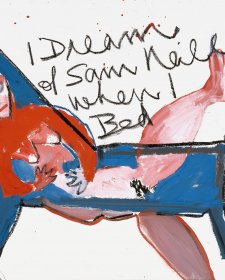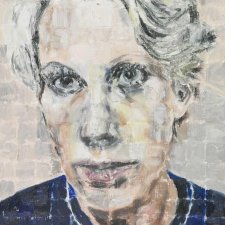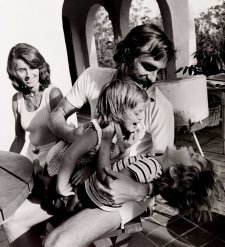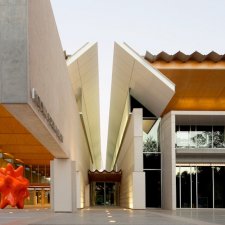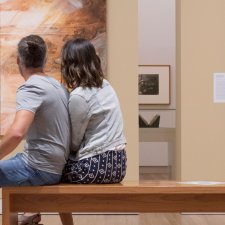Magnetic personalities and complex relationships defined the Heide Circle. Poet Max Harris once wrote ‘Heide is not a stream you paddle in: It’s the ocean, the life system, the contact at depth … Heide is a strong place.’
1 In the mirror: self portrait with Joy Hester, 1939 Albert Tucker. 2 Sunday Reed and Sidney Nolan holding Sweeney, 1945 Albert Tucker. National Gallery of Australia, Gift of Barbara Tucker 2002. 3 John Reed, Joy Hester, Sunday Reed carrying Sweeney and Sidney Nolan, 1945 Albert Tucker. National Gallery of Australia. 4 Joy Hester and Sweeney asleep, 1945 Albert Tucker. National Gallery of Australia, Gift of Barbara Tucker 2002.
Established by arts patrons John and Sunday Reed at their property, past the outskirts of Melbourne, Heide became an epicentre for assorted creatives of the Australian Modernist period of the 1930s and 1940s. Later named ‘the Heide Circle’, the collective included artists Albert Tucker, Joy Hester and Sidney Nolan, and writers Max Harris and Michael Keon. Tucker, best-known as a painter, was also a keen photographer; he took this self-portrait with Hester in 1939, and the pair married two years later. The three 1945 photographs – taken by Tucker while holidaying at Point Lonsdale – record intimate moments with Hester, their son Sweeney, and the Reeds. The warm Point Lonsdale images belie underlying tensions in the close-knit community, which included a Nolan-Reed love triangle. Only three years later, Hester, diagnosed with Hodgkin’s lymphoma, had moved away to start a relationship with artist Gray Smith; Nolan and Tucker moved abroad; and the Reeds had become Sweeney’s parents. By the 1950s, the Heide Circle was no more.
That’s one to get your heart started! You are 9 stories away from seeing your love score...
Choose your next love story
